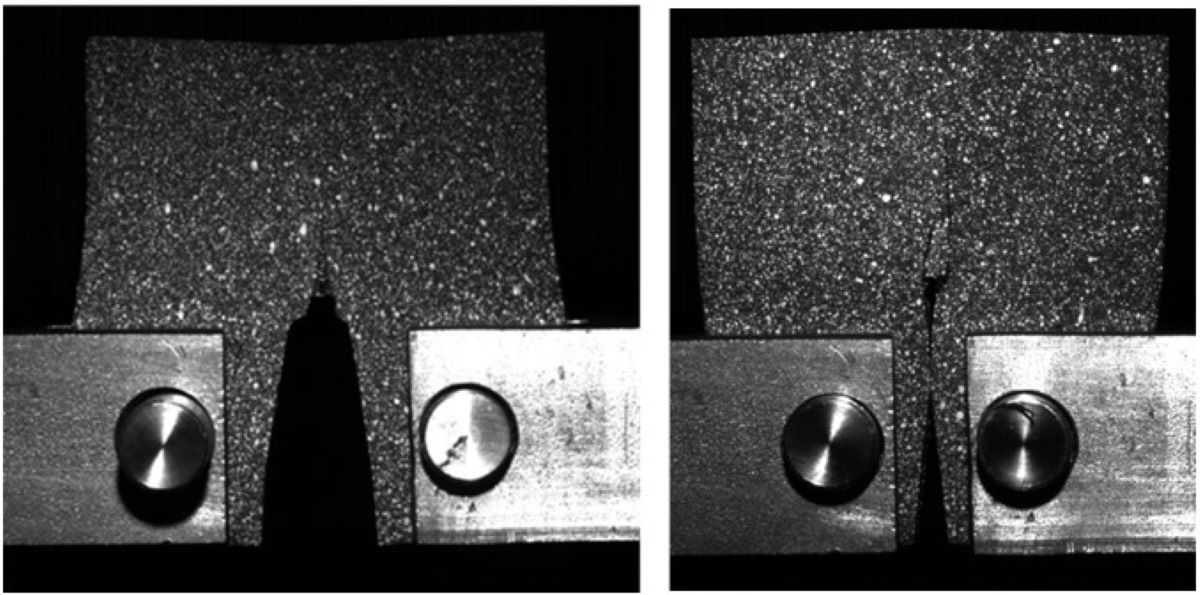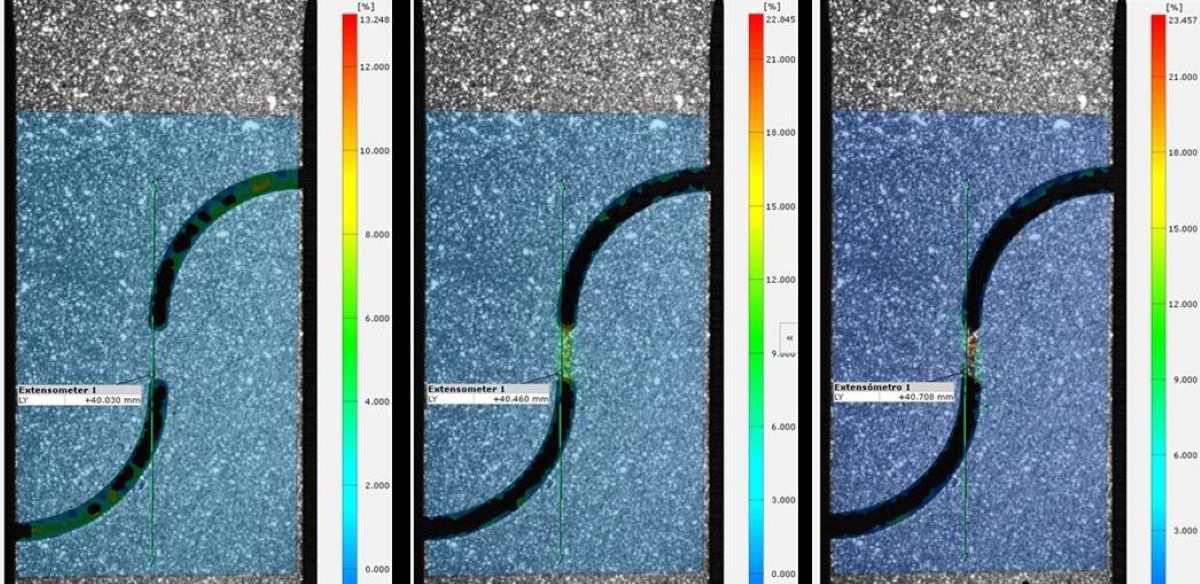Figure 1. Example of strain fields measured during QS shear test. Left: early stage; Centre: intermediate stage; Right: stage close to failure.
The development of safe, lightweight and circular vehicle structures that is at the core of SALIENT project relies heavily on the creation of advanced, tailored metallic and composite materials, as well as in the simulation of the performance of the components and structures that are made up of them. In both cases, materials characterization is a mandatory task. Regarding the former, materials characterization allows evaluating the performance of the developed materials under controlled load scenarios, thus generating valuable knowledge about their behavior and failure mechanisms. Concerning the latter, the datasets generated during coupon testing activities feed the material cards that are employed in the FEM software (LS-DYNA). So in SALIENT, materials characterization is considered the link between the physical and virtual dimensions of the front-end structure design process. By taking into account the interrelations that exist between all these activities, it is possible to develop the materials that are most suitable for a certain FES component.

Within the project, an extruded Al6063 formulation, and a Polyamide6-Carbon Fibre reinforced (PA6-CFRP) composite were thoroughly characterized. Tensile, biaxial, compression and shear tests were carried out. The dynamic behaviour of the materials was also investigated up to 200s-1 to better reflect the behaviour in a crash. Fracture mechanisms were also characterized through inter- and translaminar tests. Standardized specimen geometries were used whenever possible to enable a direct comparison with the state of the art. Digital Image Correlation was also employed as a means to obtaining full-field data along the tests, thus having a more comprehensive knowledge about the local behaviour of the material.
The results for the Al6063 showed that the material has predictable and repetitive behaviour, including failure mechanisms. The material also presents low sensitivity to coupon orientation and strain rate. Therefore, it is suitable to build the load-bearing components of the front-end. On the other hand, the PA6-CFRP composite, due to its unidirectional reinforcement, presented strong anisotropy. Outstanding performance (stiffness, maximum stress, etc.) was found on the pure unidirectional laminates. Besides, the triggering of failure is a complex process, to some extent dependent on the quality of the adhesion achieved between the carbon fibres and the polyamide matrix. Therefore, in SALIENT, the PA6-CFRP will be employed either as local reinforcement of the Aluminium extruded profiles, or in components that are mostly subjected to axial loads (e.g crashbox).

Figure 2. Translaminar failure is characterized by means of compact tension (left) and compression (right) tests.
As a whole, this work is supported by the European Union’s Horizon 2022 Research and Innovation Programme under Grant Agreement No. 10047227.
